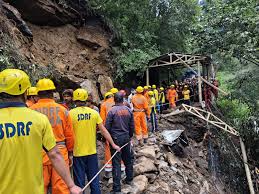
Tuna level ozone hole discovered
“Tuna Level” Ozone Hole Discovered Alarming Atmospheric Gap Sparks Global Scientific Concern
In a startling development for climate scientists and environmental watchdogs, researchers have confirmed the formation of a significant and unusually located ozone hole, dubbed the "Tuna level" ozone hole due to its altitude and chemical characteristics. Unlike the traditional seasonal ozone holes that appear over Antarctica, this new atmospheric breach has been identified over a region above the Pacific Ocean, hovering at altitudes where ozone levels are essential for filtering harmful ultraviolet radiation. The hole's altitude and scale comparable to the layers where commercial aircraft cruise and where marine ecosystems begin to show sensitivity to radiation make the discovery both a scientific anomaly and a pressing global concern.
The ozone layer, situated in the stratosphere, plays a critical role in shielding the Earth from the sun’s ultraviolet B (UV B) radiation. Depletion in this layer results in increased exposure to UV rays, which can lead to higher rates of skin cancer, cataracts, and crop damage, as well as disrupt marine life. Historically, ozone holes have been associated with manmade chemicals like chlorofluorocarbons (CFCs), which were phased out globally under the 1987 Montreal Protocol. Since then, global ozone levels have gradually recovered, particularly over the Antarctic, where ozone holes appear seasonally and have become a focal point of atmospheric monitoring. The discovery of a new, persistent ozone gap in the tropical mid stratosphere challenges the long held understanding of how and where ozone depletion occurs.
According to the research team from the International Atmospheric Observatory (IAO), the Tuna level ozone hole was first detected in late 2024 during a routine high altitude balloon measurement over the Pacific. What began as a minor dip in ozone readings quickly evolved into a pattern of sustained low concentrations at altitudes between 12 and 17 kilometers the level where the stratosphere meets the upper troposphere. These levels are significantly lower than those found in typical ozone depletion zones, and they align closely with altitudes where migratory fish, like tuna, are most susceptible to radiation related genetic disruptions. The term “Tuna level” was coined by a lead marine biologist to illustrate the unusual vertical profile of the ozone gap and its potential biological implications.
Initial analysis suggests that this new type of ozone depletion is being driven by a combination of emerging pollutants and changes in atmospheric circulation linked to global warming. Volatile organic compounds (VOCs), particularly those associated with industrial solvents, aviation fuel byproducts, and unregulated refrigerants, are now under intense scrutiny. Unlike CFCs, many of these newer compounds degrade more quickly but still rise to mid stratospheric levels, where they can interact with solar radiation and water vapor to produce ozone destroying radicals. Moreover, intensified convective storms in the tropics, possibly influenced by rising sea surface temperatures, are pushing more water vapor into the stratosphere, accelerating chemical reactions that break down ozone molecules.
The discovery has triggered swift international responses from environmental agencies and scientific communities. The World Meteorological Organization (WMO) and the United Nations Environment Programme (UNEP) have both issued preliminary warnings and have called for a global task force to further investigate the ozone loss mechanisms at play. Unlike Antarctic ozone holes, which are seasonal and primarily caused by polar stratospheric clouds and chlorine compounds, the Tuna level hole appears to be semi permanent and chemically driven by entirely different processes. This means that current ozone protection policies may not be sufficient to address this new phenomenon, particularly if tropical regions become persistent ozone depletion zones.
One of the most worrying implications of the Tuna level ozone hole is its potential impact on ocean ecosystems. Phytoplankton the microscopic plants that form the base of the marine food chain are extremely sensitive to UV B radiation. A sustained increase in UV exposure in tropical marine zones could disrupt plankton growth, reduce fish populations, and ultimately affect global food security. Marine researchers are already planning satellite based monitoring to assess any changes in plankton blooms in the Pacific areas under the ozone hole. Tuna, being a top predator and migratory species, could experience long term genetic mutations and reproductive issues, potentially altering fishery yields and international seafood markets.
Health experts, too, are sounding alarms. Tropical nations lying beneath the affected zone may experience an increase in UV related health issues such as skin cancers, cataracts, and immune system suppression. Public health authorities in coastal regions of Southeast Asia, Oceania, and South America are being advised to intensify UV awareness campaigns and possibly revise sun exposure guidelines. In urban centers near the equator, where people are already vulnerable due to prolonged sun exposure and limited access to healthcare, even a slight uptick in harmful radiation could have serious social consequences.
In response to the growing concerns, governments and scientific bodies are calling for urgent monitoring and potential regulatory action. There is mounting pressure to reassess industrial emission standards, especially for newly emerging compounds that are not currently restricted under the Montreal Protocol. Proposals include the creation of a global registry for unregulated ozone depleting substances and enhanced satellite based ozone surveillance. There is also discussion about deploying high altitude monitoring aircraft to perform chemical sampling directly within the Tuna level hole to better understand the substances responsible. Long term solutions may also involve atmospheric engineering or cloud seeding experiments to neutralize harmful radicals though such interventions remain highly controversial.
In conclusion, the discovery of the Tuna level ozone hole represents a sobering reminder that Earth’s atmospheric systems are complex, dynamic, and still not fully understood. While the Montreal Protocol remains one of the most successful environmental treaties ever enacted, new challenges like this one require updated scientific understanding and a renewed global commitment to atmospheric protection. As the world confronts intersecting crises from climate change to biodiversity loss ensuring the stability of the ozone layer remains essential. The Tuna level ozone hole not only highlights the need for vigilance in monitoring our skies but also serves as a call to action our work in safeguarding the planet’s natural shields is far from over.











